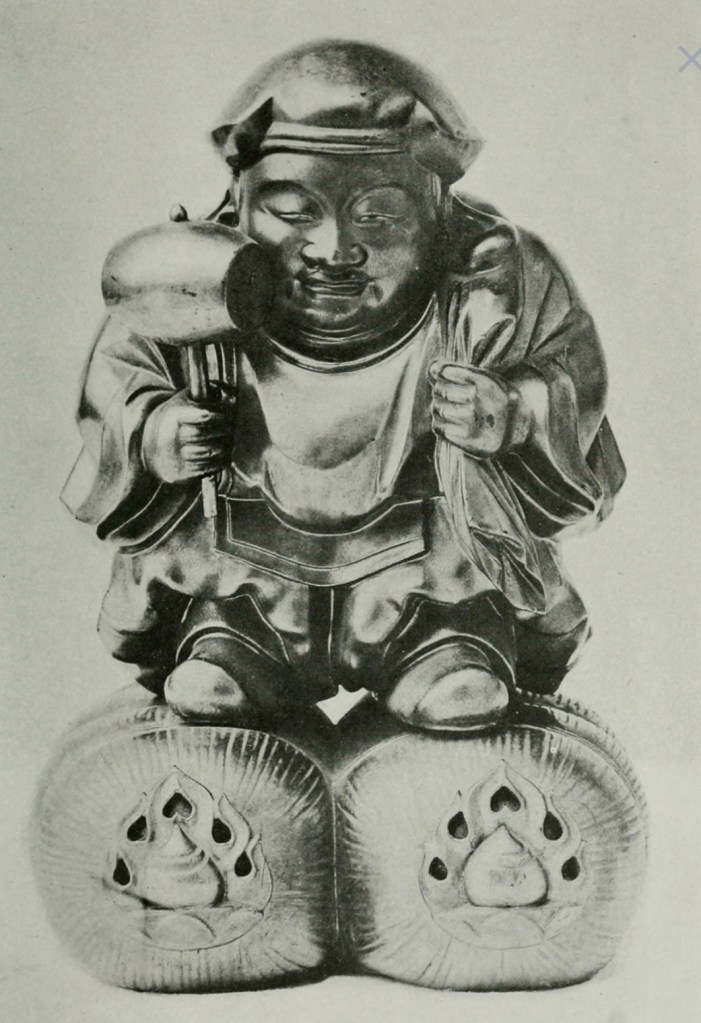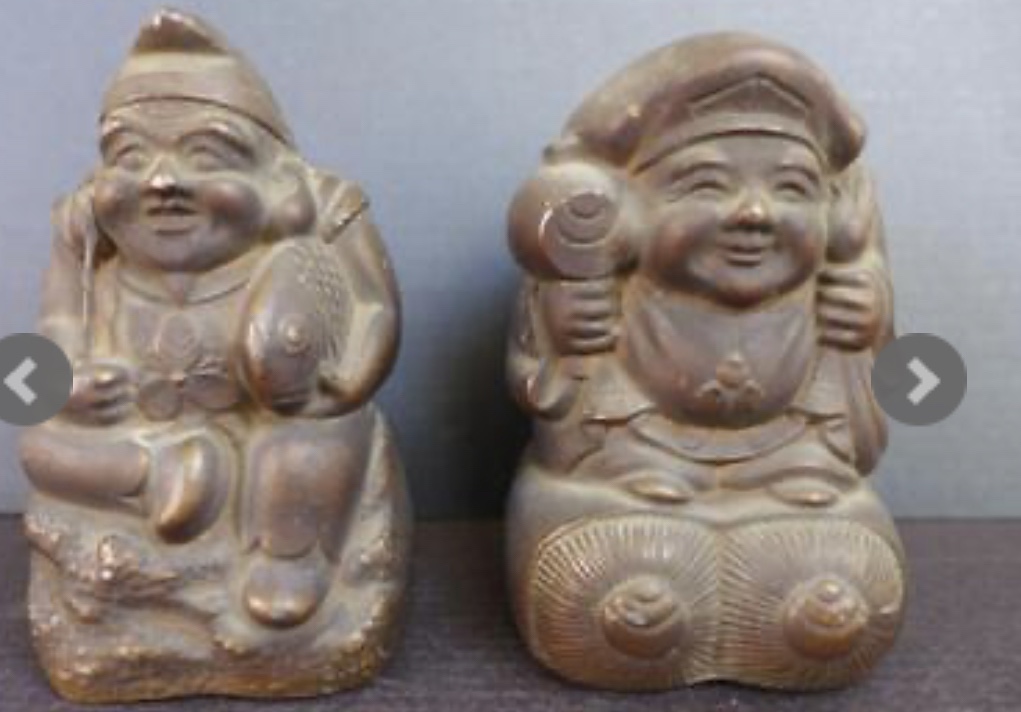In Japanese mythology, the Seven Lucky gods or Seven gods of Fortune. In Japan, these Gods are believed to grant good luck and are often represented in artworks. And displayed in shops hotels, churches, and almost everywhere you go, all over Japan.

They all began as remote and impersonal gods, but gradually became much closer canonical figures for certain professions and Japanese art. During the course of their history, the mutual influence between gods has created confusion about which of them was the patron of certain professions. The worship of this group of gods is also due to the importance of the number seven in Japan, supposedly a signifier of good luck.
Approximately 3 weeks ago. Club member Dave Arnold & I hit up one of my permissions near my home in Yarker. And just after about an hour of detecting I came across what I thought was a small figurine that looked like a Buddha! After a quick cleaning of the item, I took the small heavy figure over to Dave for closer examination, where we both thought that a Buddha, is exactly what I had unearthed.
I started researching wether it was good luck or not to put a Buddha figurine in one’s home or not? Turns out that there is good luck depending on which way the Buddha faces in one’s home. I decided to display the very weathered Buddha on a mantle facing east which I thought would possibly bring good luck to our home (as per my research lol)

However, it turns out what I had actually uncovered was an Antique figurine of one of the Japanese lucky 7 Gods by the name of “Daikokuten” one of the lucky 7 who originated in India and migrated to ancient China belief, but then the Japanese religion and beliefs adopted Daikokuten as one of the 7 lucky gods and started to mention this God as such, somewhere between around 420 to 563 (BCE)
Daikokuten, once known as the God of destruction is now known as the god of Wealth, Fortune, and prosperity, as he raises his Mallet made of gold showing his power over wealth, and he is sometimes considered the patron of cooks, farmers and bankers, and a protector of crops. He is also considered a Demon hunter − legend says that the god Daikokuten hung a sacred talisman on the branch of a tree in his garden and, by using this as a trap, he was able to catch a demon.
This god is characterized by his smile, by his short legs and by the hat on his head. He is usually depicted with a bag full of valuable objects. And/or sits on bags of rice. I say he, but can be transformed into a figure representing a Female as well.

So exactly how old is Daikokuten?
Well He is at least as old as Buddha (who was born in 563 BCE or 480 BCE), making him over 2500 years old., but how old is the little figurine I dug out of my 1860’ permission?
So the question still remains, how old is the Daikokuten figure I found? All I know is that I was detecting on a known, 1860’s property, the items I was digging out of the ground were from around that era, and the items I was digging up were from approx 4 to 5 inches below the surface. However this particular find, was around 7 or 8 inches below the surface. I will need to do more research on this item in the coming weeks but for now I am self proclaiming it at least an antique. Lol.

In the 1890’s Japanese joined Chinese immigrant workers across Canadian lands to assist with the construction of Canadian railways. Traditionally both Chinese and Japanese workers would bring a token of appreciation to the outfit or individual that hired them.
History tells us that these immigrant workers were treated extremely poorly during these times however a traditional gift of a small figurine of one or even a set of the 7 Gods Of Fortune were a common gift to give and show appreciation for the work that was provided to them.
So was this figurine of Daikokuten, a gift by a worker or possibly servant, to the old train station master whom we know once lived on the property I was detecting on?
In all honesty, I do not know. Maybe one day I will find out for certain, but for now I’ll just have to put my imagination to the test. However if it was, then it would date this small statue back to the late 1800’s again putting it around the same era as many of the items I had dug up in the same area on that old 1800’s property.
